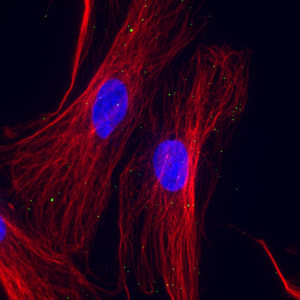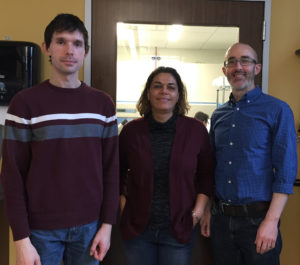
In a recent study, Derek Walsh, PhD, associate professor of Microbiology-Immunology, and his team showed how the herpes simplex virus (HSV) exploits microtubule plus-end tracking proteins to initiate transport and infection in human cells.
The new research shows that HSV relies on a complex of proteins that mediate cargo capture in order to engage microtubules, the host cell’s intracellular transport network, to reach to the nucleus of a cell and replicate.
Using imaging techniques, Walsh demonstrated that before HSV moves using dynein, the virus depends on the dynamic nature of microtubules for capture. He observed that these microtubules, which dynamically grow and shrink to sense the intracellular environment, capture virus particles using specialized tracking proteins, EB1 and CLIP-170, at the tips of the microtubules.
“The virus actually sits at the periphery of the cell, and the proteins at the tip of the microtubules hook it and grab it on to the microtubule,” Walsh said. “Up until now, it would be assumed the virus could get on any part of the microtubule as long as it’s on a motor, but that doesn’t seem to be the case.”

This finding, published in the Journal of Cell Biology, has “changed the way we think about how the virus gets on the microtubule,” Walsh said.
Furthermore, when the scientists observed other structures within the cell, such as proteins and organelles that depend on microtubules and motor proteins for transport, they found these structures do not need the tracking proteins EB1 and CLIP-170. This finding suggests that these specialized proteins that are required for HSV infection could serve as potential targets in the development of new antivirals.
In future research, Walsh plans to study the mechanisms of how the virus targets tracking proteins and engages microtubules.
The research was supported by grants from the National Institutes of Health R01GM101975 and P01GM105536.






